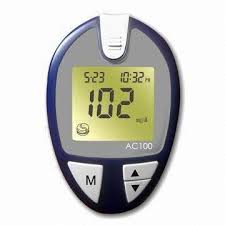
“Glucose monitoring for diabetes made easy with a blood-less method.” (link)

“Glucose monitoring for diabetes made easy with a blood-less method.” (link)
Technologies in development for less-invasive or non-invasive glucose monitoring are legion, and many are very promising, but you can’t fill out a deposit slip with these promises. Frequently, such alternatives are based on the premise of quantifying blood glucose by sensitively detecting glucose in other fluids (interstitial fluid, tears, saliva, urine, etc.) that do not require the use of lancets to draw blood. However, despite their sensitivity and other sophistication in detecting minute quantities of glucose, their “arm’s length” to actual blood glucose compounds the challenge by requiring that the test reproducibly correlate the sample values with actual, current blood glucose levels.
The challenge stands unanswered, while the burgeoning population of endlessly finger-pricked diabetics remains painfully unsatisfied.
As a practical reality, continuous blood glucose monitors like those from Dexcom and Medtronic offer far more to the diabetic population, not only by avoiding finger pricks but also by revealing the patterns in blood glucose levels over time as a result of activity, carbohydrate intake, insulin bolus, insulin basal rate, stress and countless other patient-specific determinants.